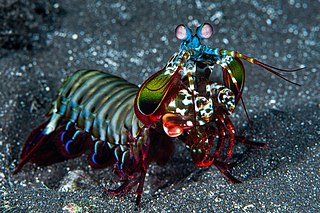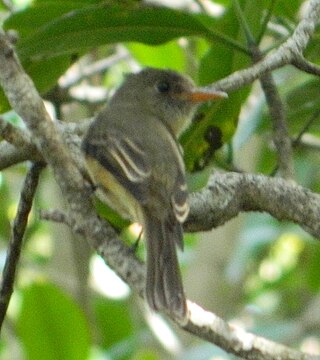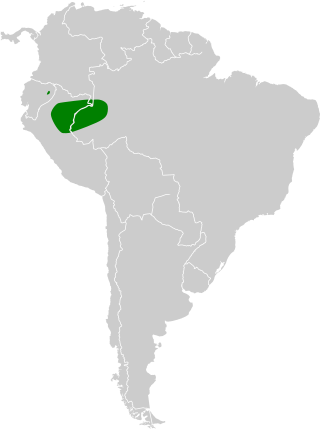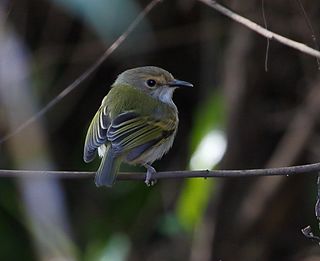
Caiman is a genus of caimans within the alligatorid subfamily Caimaninae. They inhabit Central and South America. They are relatively small sized crocodilians, with all species reaching lengths of only a couple of meters and weighing 6 to 40 kg on average.

The West Indian manatee, also known as the North American manatee, is a large, aquatic mammal native to warm coastal areas of the Caribbean, from the Eastern United States to northern Brazil. Living alone or in herds, it feeds on underwater plants and uses its whiskers to navigate. It is divided into two subspecies, the Florida manatee in the United States and the Antillean manatee in the Caribbean, both of which are endangered and face pressure from habitat loss, pollution, and other human activity. The West Indian manatee is the largest living member of the sirenians, a group of large aquatic mammals that includes the dugong, other manatees, and the extinct Steller's sea cow.

Odontodactylus is a genus of mantis shrimp, the only genus in the family Odontodactylidae. Mantis shrimp of the genus Odontodactylus can not only detect circular polarisation of light, but can also detect polarised light reflecting off their telson and uropods.

The broad-snouted caiman is a crocodilian in the family Alligatoridae found in eastern and central South America, including the Pantanal habitat of Bolivia, Southeast Brazil, and Paraguay, as well as northern Argentina and Uruguay. Behind the black caiman, it is the second-largest caiman species; it is the third-largest alligatorid behind the American alligator and the aforementioned black caiman. Primarily, the species inhabits freshwater wetlands, including floodplains, marshes, swamps, and some mangrove forests, as well as various streams, rivers, lakes or ponds, preferring bodies of rather still or slower-moving water. They will often utilize man-made cow ponds, disused stock tanks, and canals and ditches, as well.

Carnaby's black cockatoo, also known as the short-billed black cockatoo, is a large black cockatoo endemic to southwest Australia. It was described in 1948 by naturalist Ivan Carnaby. Measuring 53–58 cm (21–23 in) in length, it has a short crest on the top of its head. Its plumage is mostly greyish black, and it has prominent white cheek patches and a white tail band. The body feathers are edged with white giving a scalloped appearance. Adult males have a dark grey beak and pink eye-rings. Adult females have a bone-coloured beak, grey eye-rings and ear patches that are paler than those of the males.

Odontodactylus scyllarus, commonly known as the peacock mantis shrimp, harlequin mantis shrimp, painted mantis shrimp, clown mantis shrimp, rainbow mantis shrimp, or simply mantis shrimp, is a large stomatopod native to the epipelagic seabed across the Indo-Pacific, ranging from the Marianas to East Africa, and as far South as Northern KwaZulu Natal in South Africa.

The broad-billed hummingbird is a small-sized hummingbird that resides in Mexico and the southwestern United States. The bird displays sexual dimorphism, and the juveniles resemble the female adult more than the male adult. The broad-billed hummingbird is a bright coloured bird with a broad and bright red bill. The bird is also known for its other common names – the Colibrí Pico Ancho in Spanish and Colibri circé in French. It is a diurnal bird.
Telmatobius latirostris is a species of frog in the family Telmatobiidae. It is endemic to Peru. Its natural habitats are rivers, urban areas, and irrigated land. It is threatened by habitat loss.

The yellow-whiskered greenbul or yellow-whiskered bulbul is a species of the bulbul family of passerine birds. It is found in western and central Africa.

The Lesser Antillean pewee is a species of bird in the family Tyrannidae.

The band-tailed cacique, formerly the band-tailed oropendola, is a species of bird in the family Icteridae.

The rusty-fronted tody-flycatcher is a species of bird in the family Tyrannidae, and one of twelve in the genus Poecilotriccus. It is found in Bolivia, Brazil, Colombia, Ecuador, and Peru. Its natural habitats are subtropical or tropical moist lowland forest and heavily degraded former forest.
Black cockatoo is a general descriptive term for cockatoos that are mainly black and may include:
Eosqualodon is a genus of squalodontid odontocete from the Late Oligocene to Early Miocene (Chattian-Aquitanian) of northwestern Germany and northeastern Italy.
Ophryastes latirostris is a species of broad-nosed weevil in the beetle family Curculionidae. It is found in North America.
The Taiwan broad-muzzled bat or Taiwan broad-muzzled myotis is a species of vesper bat found in Taiwan.
Neoarius latirostris, the broad-snouted catfish, is a species of catfish in the family Ariidae. It was described by William John Macleay in 1883, originally under the genus Arius. It inhabits freshwater rivers in Indonesia and Papua New Guinea. Its diet includes finfish, mollusks, prawns, terrestrial arthropods, aquatic insects, and plants. It reaches a maximum standard length of 50 cm (20 in).
Caiman brevirostris is an extinct species of caiman that lived during the Late Miocene, around 11.6 million years ago, to the end of the Miocene 5.3 million years ago in Acre and Amazonas, Brazil as well as Urumaco, Venezuela. Several specimens have been referred to the species, but only 3 of them are confidently placed in the species. C. brevirostris was originally named in 1987 on the basis of a single, incomplete rostrum with an associated mandibular ramus that had been found in Acre, Brazil. C. brevirostris is very distinct among Caiman species and caimaninae overall in that it preserves a characteristically short and robust skull that bears blunt posterior teeth that were built to break down harder foods. This was an adaption for durophagy, likely to crush shells of mollusks and clams which were common in the wetlands that C. brevirostris resided in.

Cyta latirostris is a species of snout mite in the family Bdellidae. The cosmopolitan species was first described by Jean-Frédéric Hermann in 1804 as Scirus latirostris.
Eurygenium is an extinct genus of notoungulate belonging to the family Notohippidae. It lived during the Late Oligocene in what is today South America.











